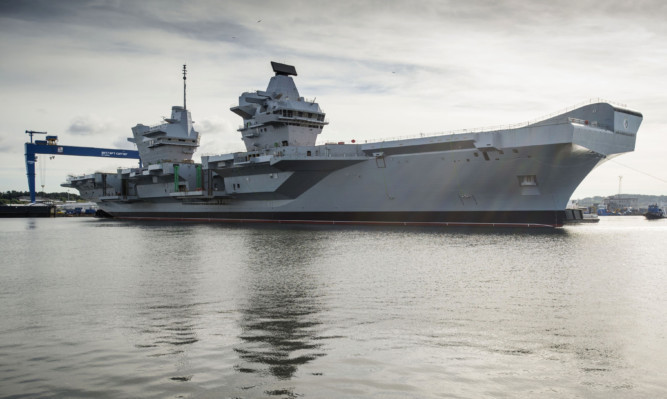Defence chiefs have moved to calm fears that a planned multi-million-pound venture between Britain and Oman could cost Rosyth jobs.
But, although a Ministry of Defence deal to boost the provision of engineering work and support both of the Royal Navy’s new Queen Elizabeth Class super-aircraft carriers will not hit the Fife bid directly, there are still no guarantees about refit work taking place on the north side of the Forth.
Local MP Douglas Chapman expressed concern about the plans.
MoD sources said the viability of three UK dry dock locations capable of undertaking dock work on the vessels was being examined but no decision has been reached on where the vast majority of the work will go.
Mr Chapman, the Dunfermline and West Fife representative, said: “This is potentially worrying, seeing that Rosyth has still not received any assurances about refit work for both carriers. This is due to begin as early as 2020/21.
“It is work that has the potential to be just as significant for the long-term future of the yard as the initial order and to miss out would be a bitter blow for the workforce and the wider area.
“This Oman development aside, it’s time for the MoD to let us know what their plans are for Rosyth, ‘post-carriers’ and we need clarity around that move.”
The planned deal between Babcock and the Oman Drydock Company was announced by UK Defence Secretary Michael Fallon.
But an MOD spokesperson said: “The Queen Elizabeth Class Carriers have created thousands of jobs in Rosyth and across the UK.
“While the vast majority of future maintenance on the carriers will be undertaken in Britain, it is not unusual for ships to use maintenance facilities in other countries if necessary on overseas operations.”
Mr Chapman, who sits on the Defence Select Committee, has been vocal in campaigning for Rosyth Dockyard to be the location for any refit work on the HMS Queen Elizabeth and her sister ship the Prince of Wales.
Mr Chapman has pledged to fight for Rosyth in response to an answer provided to his parliamentary question by Defence Procurement Minister Philip Dunne.
Mr Dunne refused to disclose refit locations but Mr Chapman countered that Rosyth was “clearly the best choice, given that the workforce assembled the carriers and know both ships inside out”.
It is thought that work on the carriers has created or sustained between 7,000 and 8,000 jobs at the Tier 1 shipyards in the UK.
Supply chain companies are understood to have employed up to a further 3,000 people, boosting local economies.
